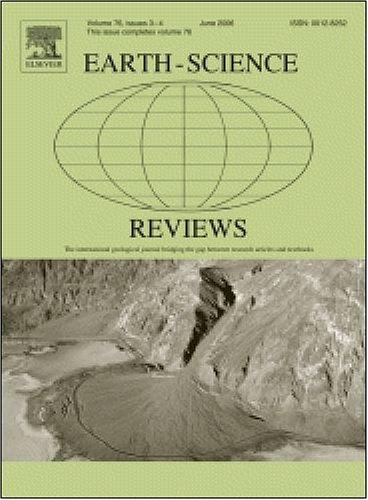Tectonic evolution of the eastern Central Asian Orogenic Belt during the Carboniferous–Permian
IF 10.8
1区 地球科学
Q1 GEOSCIENCES, MULTIDISCIPLINARY
引用次数: 0
Abstract
The eastern Central Asian Orogenic Belt (CAOB) is an interactive area of multiple tectonic regimes. In the past decades, researchers have conducted extensive studies in the eastern CAOB over the past decades and reported plenty of new data. However, there are still many open questions and arguments dealing with the correlation and tectonic affinity of different blocks with Precambrian crystalline basements, the subduction tectonic processes, and the initiation time of the oceans surrounding the blocks at the eastern CAOB. In this study, we provide a detailed review of the tectonic evolution of the Precambrian blocks in the Eastern Mongolia, NE China, and Far East Russia and provide a regional comparison and correlation of the different tectonic units in the region, initial subduction of Mongolia–Okhotsk Ocean and Pathalassa Ocean, and set up a tectonic evolution model from Carboniferous to Permian. In the late Early Paleozoic, the Ereendavaa Block in Eastern Mongolia and the Erguna and Jiamusi Blocks in NE China, as well as the Mamyn and Bureya Blocks in the Far East Russia, respectively formed the Ereendavaa–Erguna–Mamyn Block chain (EEMB) and Bureya–Jiamusi–Khanka Block chain (BJKB) were formed and probably connected and constructed a long united block chain. Combined with the geochronological and geochemical data of the late Paleozoic magmatic rocks from these tectonic units, we suggest that the southeastward subduction of the Mongolia–Okhotsk Ocean along the northwestern margin of the EEMB was initiated in the Late Carboniferous, then the westward subduction of the Panthalassa Ocean along the eastern margin of the BJKB was subsequently initiated in the Late Carboniferous, indicating that the initial subduction around outside of which migrated from west to east. With the continuous subduction of the Mongolia–Okhotsk Ocean and Panthalassa Ocean, the EEMB–BJKB block chain underwent further bending, forming a southward–opened curve and constituted the NE China Orocline.
石炭纪-二叠纪中亚造山带东部的构造演化
中亚东部造山带是一个多构造体系相互作用的地区。在过去的几十年里,研究人员在东部CAOB进行了广泛的研究,并报告了大量的新数据。然而,对于不同块体与前寒武纪结晶基底的相关性和构造亲和性、俯冲构造过程、块体周围海洋的起始时间等问题,仍有许多悬而未决的问题和争论。本文详细回顾了蒙古东部、中国东北和俄罗斯远东地区前寒武纪地块的构造演化,并对该地区不同构造单元、蒙古-鄂霍次克洋和帕塔拉萨洋的初始俯冲进行了区域对比和对比,建立了石炭-二叠纪的构造演化模型。早古生代晚期,蒙古东部的Ereendavaa地块、中国东北部的额尔古纳和佳木斯地块以及俄罗斯远东地区的Mamyn和Bureya地块分别形成了Ereendavaa -额尔古纳- Mamyn区块链(EEMB)和Bureya - jiamusii - khanka区块链(BJKB),并可能相互连接,构成了一条长而统一的区块链。结合这些构造单元晚古生代岩浆岩的年代学和地球化学资料,我们认为晚石炭世蒙古-鄂霍次克洋沿东北缘东南俯冲开始,随后晚石炭世泛海沿东北缘西俯冲开始。表明其外围的初始俯冲是由西向东迁移的。随着蒙古-鄂霍次克洋和泛海洋的持续俯冲,EEMB-BJKB区块链进一步弯曲,形成向南打开的曲线,构成了中国东北造山斜。
本文章由计算机程序翻译,如有差异,请以英文原文为准。
求助全文
约1分钟内获得全文
求助全文
来源期刊

Earth-Science Reviews
地学-地球科学综合
CiteScore
21.70
自引率
5.80%
发文量
294
审稿时长
15.1 weeks
期刊介绍:
Covering a much wider field than the usual specialist journals, Earth Science Reviews publishes review articles dealing with all aspects of Earth Sciences, and is an important vehicle for allowing readers to see their particular interest related to the Earth Sciences as a whole.
 求助内容:
求助内容: 应助结果提醒方式:
应助结果提醒方式:


